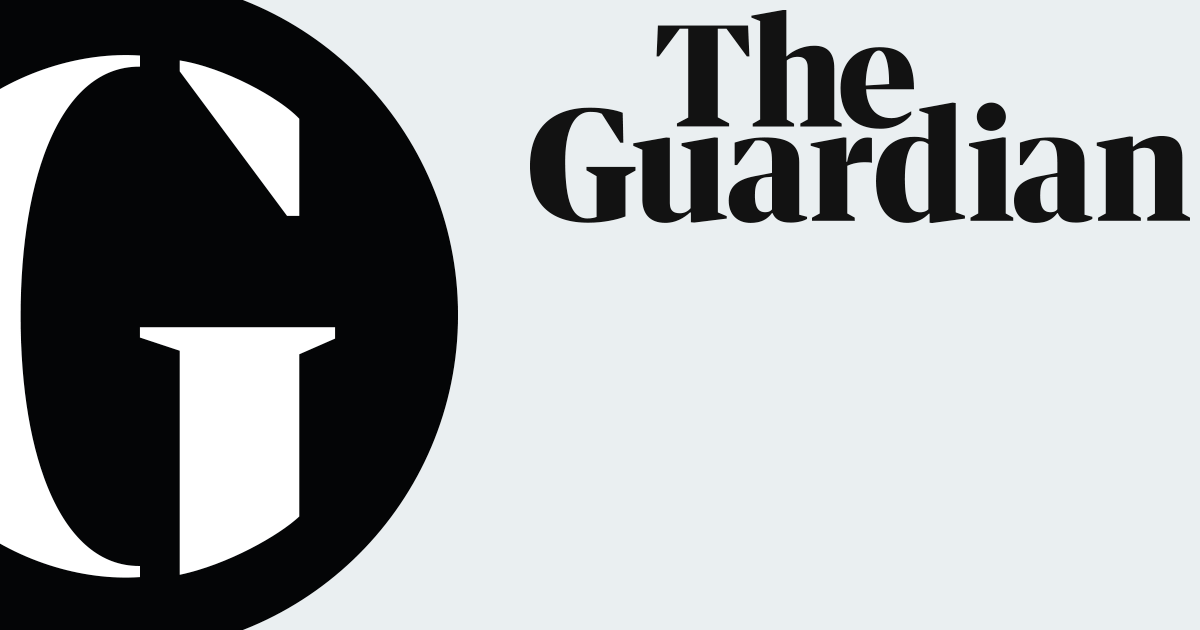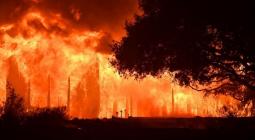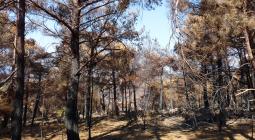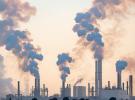Ο αφανισμός του ανθρώπου είναι πλέον ορατός.
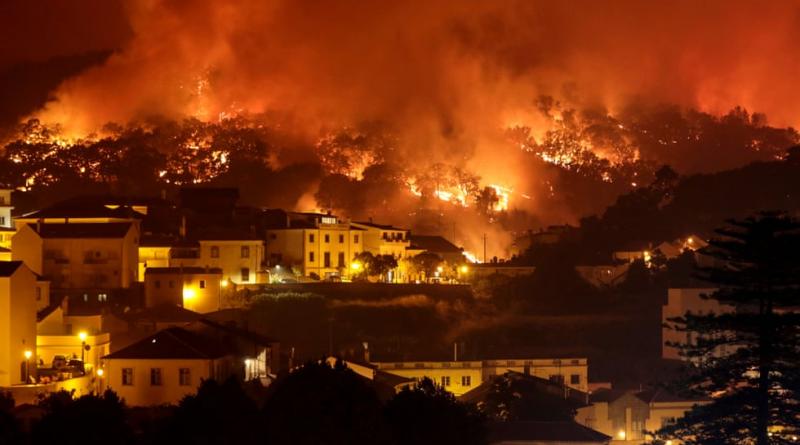
Τι μας λέει ένας κόσμος που φλέγεται για την κλιματική αλλαγή.
‘The devastation of human life is in view’: what a burning world tells us about climate change
I was wilfully deluded until I began covering global warming, says David Wallace-Wells. But extreme heat could transform the planet by 2100
I have never been an environmentalist. I don’t even think of myself as a nature person. I’ve lived my whole life in cities, enjoying gadgets built by industrial supply chains I hardly think twice about. I’ve never gone camping, not willingly anyway, and while I always thought it was basically a good idea to keep streams clean and air clear, I also accepted the proposition that there was a trade-off between economic growth and cost to nature – and figured, well, in most cases I’d go for growth. I’m not about to personally slaughter a cow to eat a hamburger, but I’m also not about to go vegan. In these ways – many of them, at least – I am like every other American who has spent their life fatally complacent, and wilfully deluded, about climate change, which is not just the biggest threat human life on the planet has ever faced, but a threat of an entirely different category and scale. That is, the scale of human life itself.
A few years ago, I began collecting stories of climate change, many of them terrifying, gripping, uncanny narratives, with even the most small-scale sagas playing like fables: a group of Arctic scientists trapped when melting ice isolated their research centre on an island also populated by a group of polar bears; a Russian boy killed by anthrax released from a thawing reindeer carcass that had been trapped in permafrost for many decades. At first, it seemed the news was inventing a new genre of allegory. But of course climate change is not an allegory. Beginning in 2011, about a million Syrian refugees were unleashed on Europe by a civil war inflamed by climate change and drought; in a very real sense, much of the “populist moment” the west is passing through now is the result of panic produced by the shock of those migrants. The likely flooding of Bangladesh threatens to create 10 times as many, or more, received by a world that will be even further destabilised by climate chaos – and, one suspects, less receptive the browner those in need. And then there will be the refugees from sub-Saharan Africa, Latin America and the rest of south Asia – 140 million by 2050, the World Bank estimates, more than 10 times the Syrian crisis.
My file of stories grew daily, but very few of the clips, even those drawn from new research published in the most pedigreed scientific journals, seemed to appear in the coverage about climate change we watched on television and read in newspapers. Climate change was reported, of course, and even with some tinge of alarm. But the discussion of possible effects was misleadingly narrow, limited almost invariably to the matter of sea level rise. Just as worrisome, the coverage was sanguine, all things considered.
As recently as the 1997 signing of the landmark Kyoto Protocol, 2C of global warming was considered the threshold of catastrophe: flooded cities, crippling droughts and heatwaves, a planet battered daily by hurricanes and monsoons we used to call “natural disasters” but will soon normalise as simply “bad weather”. More recently, the foreign minister of the Marshall Islands in the Pacific offered another name for that level of warming: “genocide”.
There is almost no chance we will avoid that scenario. TheKyoto Protocol achieved, practically, nothing; in the 20 years since, despite all our climate advocacy and legislation and progress on green energy, we have produced more emissions than in the 20 years before.
In reading about warming, you will often come across analogies from the planetary record: the last time the planet was this much warmer, the logic runs, sea levels were here. These conditions are not coincidences. The geologic record is the best model we have for understanding the very complicated climate system, and gauging just how much damage will come from turning up the temperature. Which is why it is especially concerning that recent research into the deep history of the planet suggests that our current climate models may be underestimating the amount of warming we are due for in 2100 by as much as half. The authors of one recent paper suggested that slashing our emissions could still bring us to 4 or 5C, a scenario, they said, would pose severe risks to the habitability of the entire planet. “Hothouse Earth”, they called it.
Because these numbers are so small, we tend to trivialise the differences between them – one, two, four, five. But, as with world wars or recurrences of cancer, you don’t want to see even one. At 2C, the ice sheets will begin their collapse, bringing, over centuries, 50 metres of sea-level rise. An additional 400 million people will suffer from water scarcity, major cities in the equatorial band of the planet will become unlivable, and even in the northern latitudes heatwaves will kill thousands each summer. There would be 32 times as many extreme heatwaves in India, and each would last five times as long, exposing 93 times more people. This is our best-case scenario. At 3C, southern Europe would be in permanent drought, and the average drought in Central America would last 19 months longer. In northern Africa, the figure is 60 months longer: five years. At 4C, there would be 8m more cases of dengue fever each year in Latin America alone and close to annual global food crises. Damages from river flooding would grow thirtyfold in Bangladesh, twentyfold in India, and as much as sixtyfold in the UK. Globally, damages from climate-driven natural disasters could pass $600tn – more than twice the wealth that exists in the world today. Conflict and warfare could double.
Global warming may seem like a distended morality tale playing out over several centuries and inflicting a kind of Old Testament retribution on the great-great-grandchildren of those responsible, since it was carbon burning in 18th-century England that lit the fuse of everything that has followed. But that is a fable about historical villainy that acquits those of us alive today – and unfairly. The majority of the burning has come in the last 25 years – since the premiere of Seinfeld. Since the end of the second world war, the figure is about 85%. The story of the industrial world’s kamikaze mission is the story of a single lifetime – the planet brought from seeming stability to the brink of catastrophe in the years between a baptism or barmitzvah and a funeral.
Between that scenario and the world we live in now lies only the question of human response. Some amount of further warming is already baked in, thanks to the protracted processes by which the planet adapts to greenhouse gas. But all of the paths projected from the present will be defined by what we choose to do now. If we do nothing about carbon emissions, if the next 30 years of industrial activity trace the same arc upward as the last 30 years, whole regions will become unlivable as soon as the end of this century. Of course, the assaults of climate change do not end at 2100 just because most modelling, by convention, sunsets at that point. In fact, they could accelerate, not just because there’d be more carbon in the atmosphere then, but because increased temperatures could trigger feedback loops that might send the climate system spiralling out of control. This is why some studying global warming call the hundred years to follow the “century of hell”.
It would take a spectacular coincidence of bad choices and bad luck to make a completely uninhabitable Earth possible within our lifetime. But the fact that we have brought that eventuality into play at all is perhaps the overwhelming cultural and historical fact of the modern era. Whatever we do to stop warming, and however aggressively we act to protect ourselves from its ravages, we will have pulled the devastation of human life on Earth into view – close enough that we can see clearly what it would look like, and know, with some degree of precision, how it will punish our children and grandchildren. Close enough, in fact, that we are already beginning to feel its effects ourselves, when we do not turn away.
In southern California, December is meant to bring the start of rainy season. Not in 2017. The Thomas fire, the worst of those that roiled the region that year, grew 50,000 acres in one day, eventually burning 440 sq miles and forcing the evacuations of more than 100,000 Californians. A week after it was sparked, it remained, in the ominous semi-clinical language of wildfires, merely “15% contained”. For a poetic approximation, it was not a bad estimate of how much of a handle we have on the forces of climate change. That is to say, hardly any.
Five of the 20 worst fires in California history hit the state in the autumn of 2017, a year in which more than 9,000 separate ones broke out, burning through almost 1.25m acres – nearly 2,000 sq miles made soot. That October, in northern California, 172 fires broke out in just two days – devastation so cruel and sweeping that two different accounts were published in two different local newspapers of two different ageing couples taking desperate cover in pools as the fires swallowed their homes. One couple survived, emerging after six excruciating hours to find their house transformed into an ash monument; in the other account, it was only the husband who emerged, his wife of 55 years having died in his arms.

In the summer of 2018, the fires were fewer in number, totalling only 6,000. But just one, made up of a whole network of fires, together called the Mendocino Complex, burned almost half a million acres alone. In total, nearly 3,000 sq miles in the state turned to flame, and smoke blanketed almost half the country. Things were worse to the north, in British Columbia, where more than 3m acres burned, producing smoke that would travel across the Atlantic to Europe. Then, in November, came the Woolsey Fire, which forced the evacuation of 170,000, and the Camp Fire, which was somehow worse, burning through more than 200 square miles and incinerating an entire town so quickly that the evacuees, 50,000 of them, found themselves sprinting past exploding cars, their sneakers melting to the asphalt as they ran. It was the deadliest fire in Californian history.
Two big forces conspire to prevent us from normalising fires like these, though neither is exactly a cause for celebration. The first is that extreme weather won’t let us, since it won’t stabilise; even within a decade, it’s a fair bet that these fires, which now occupy the nightmares of every Californian, will be thought of as the “old normal”. The good old days.
The second force is also contained in the story of the wildfires: the way that climate change is finally striking close to home. Some quite special homes. The California fires of 2017 burned the state’s wine crop, blowtorched million-dollar vacation properties, and threatened both the Getty Museumand Rupert Murdoch’s Bel-Air estate. There may not be two better symbols of the imperiousness of American money than those two structures. NearbyDisneyland was quickly canopied by an eerily apocalyptic orange sky. On local golf courses, the west coast’s wealthy swung their clubs just yards from blazing fires in photographs that could not have been more perfectly staged to skewer the country’s indifferent plutocracy. Last year, Americans watchedthe Kardashians evacuate via Instagram stories, then read about the private firefighting forces they employed, the rest of the state reliant on a public force full of conscripted convicts earning as little as a dollar a day.
By accidents of geography and by the force of its wealth, the US has, to this point, been mostly protected from the devastation climate change has already visited on parts of the less developed world. The fact that warming is now hitting its wealthiest citizens is not just an opportunity for ugly bursts of liberal schadenfreude; it is also a sign of just how hard, and how indiscriminately, it is hitting. All of a sudden, it’s getting a lot harder to protect against what’s coming.
What is coming? Much more fire, much more often, burning much more land. American wildfires now burn twice as much land as they did as recently as 1970. By 2050, destruction from wildfires is expected to double again. For every additional degree of global warming, it could quadruple. At three degrees of warming, our likely benchmark for the end of the century, the US might be dealing with 16 times as much devastation from fire as we are today, when in a single year 10m acres were burned. The California fire captain believes the term is already outdated: “We don’t even call it fire season any more,” he said in 2017. “Take the ‘season’ out – it’s year-round.”
But wildfires are not an American affliction; they are a global pandemic. Each year, between260,000 and 600,000 people worldwide die from the smoke they produce. In icy Greenland, fires in 2017 appeared to burn 10 times more area than in 2014; and in Sweden, in 2018, forests in the Arctic Circle went up in flames. Fires that far north may seem innocuous, relatively speaking, since there are not so many people there. But they are increasing more rapidly than fires in lower latitudes, and they concern climate scientists greatly: the soot and ash they give off can blacken ice sheets, which then absorb more of the sun’s rays and melt more quickly. Another Arctic fire broke out on the Russia-Finland border in 2018, and smoke from Siberian fires that summer reached all the way to the mainland US. That same month, the 21st century’s second-deadliest wildfireswept through the Greek seaside, killing 100. At one resort, dozens of guests tried to escape the flames by descending a narrow stone staircase into the Aegean, only to be engulfed along the way, dying literally in each other’s arms. There were record-breaking fires in the UK, as well, including one on Saddleworth Moor that was thought to be defeated – until it emerged again from the forest’s peat floor, to become the largest British wildfire in living memory.
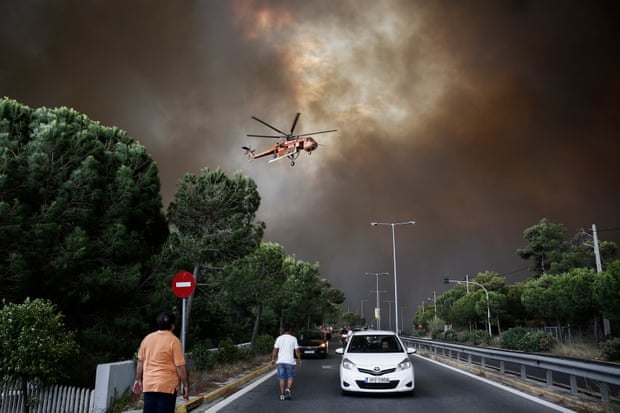
The effects of these fires are not linear or neatly additive. It might be more accurate to say that they initiate a new set of biological cycles. Scientists warn that the probability of unprecedented rainfalls will grow, too – as much as a threefold increase of events like that which produced the state’s Great Flood of 1862. Mudslides are among the clearest illustrations of what new horrors that heralds; in January 2018, Santa Barbara’s low-lying homes were pounded by the mountains’ detritus cascading down the hillside toward the ocean in an endless brown river. One father, in a panic, put his young children up on his kitchen’s marble countertop, thinking it the strongest feature of the house, then watched as a rolling boulder smashed through the bedroom where the children had been just moments before. One child who didn’t make it was found close to two miles from his home, in a gulley traced by train tracks close to the waterfront, having been carried there, presumably, on a continuous wave of mud. Two miles.
It gets worse. When trees die – by natural processes, by fire, at the hands of humans – they release into the atmosphere the carbon stored within them, sometimes for as long as centuries. In this way, they are like coal. This is why the effect of wildfires on emissions is among the most feared climate feedback loops – that the world’s forests, which have typically been carbon sinks, would become carbon sources, unleashing all that stored gas. The impact can be especially dramatic when the fires ravage forests arising out of peat. Peatland fires in Indonesia in 1997, for instance, released up to 2.6 gigatons (Gt) of carbon – 40% of the average annual global emissions level. And more burning only means more warming only means more burning. Wildfires make a mockery of the technocratic approach to emissions reduction.
In the Amazon, 100,000 fires were found to be burning in 2017. At present, its trees take in a quarter of all the carbon absorbed by the planet’s forests each year. But in 2018, Jair Bolsonaro was elected president of Brazil, promising to open the rainforest to development – which is to say, deforestation. How much damage can one person do to the planet? A group of Brazilian scientists has estimated that between 2021 and 2030, Bolsonaro’s deforestation would release the equivalent of 13.12 Gt of carbon. In 2017, theUS, with all of its aeroplanes and automobiles and coal plants, emitted about 5 Gt.
This is not simply about wildfires; each climate threat promises to trigger similarly brutal cycles. The fires should be terrorising enough, but it is the cascading chaos that reveals the true cruelty of climate change – it can upend and turn violently against us everything we have ever thought to be stable. Homes become weapons, roads become death traps, air becomes poison. And the idyllic mountain vistas around which generations of entrepreneurs and speculators have assembled entire resort communities become, themselves, indiscriminate killers.

And yet I am optimistic
Since I first began writing about warming, I’ve often been asked whether I see any reason for optimism. The thing is, I am optimistic.
Warming of 3 or 3.5C is, I’d wager, the likeliest range this century, given conventional decarbonisation and the existing – dispiriting – pace of change. It would unleash suffering beyond anything that humans have ever experienced. But it is not a fatalistic scenario; in fact, it’s a whole lot better than where we are headed without action – north of 4C by 2100, and the perhaps six or even more degrees of warming in the centuries to come. We may conjure new soutions, in the form of carbon-capture technology, which would extract CO2from the air, or geoengineering, which would cool the planet by suspending gas in the atmosphere, or other now-unfathomable innovations. These could bring the planet closer to a state we would today regard as merely grim, rather than apocalyptic.
I’ve often been asked whether it’s moral to reproduce in this climate, whether it is fair to the planet or, perhaps more importantly, to the children. As it happens, last year I had a child, Rocca. Part of that choice was delusion, that same wilful blindness: I know there are climate horrors to come, some of which will inevitably be visited on her. But those horrors are not yet scripted. The fight is, definitively, not yet lost – in fact, will never be lost, so long as we avoid extinction. And I have to admit, I am also excited, for everything that Rocca and her sisters and brothers will see, will witness, will do.
She will be entering old age at the close of the century, the endstage bookmark on all of our projections for warming. In between, she will watch the world doing battle with a genuinely existential threat, and the people of her generation making a future for themselves, and the generations they bring into being, on this planet. And she won’t just be watching it, she will be living it – quite literally the greatest story ever told. It may well bring a happy ending.
Climate change is not an ancient crime we are tasked with solving now; we are destroying our planet every day, often with one hand as we conspire to restore it with the other. Which means we can also stop destroying it, in the same style – collectively, haphazardly, in all the most quotidian ways, in addition to the spectacular-seeming ones. The project of unplugging the entire industrial world from fossil fuels is intimidating, and must be done in fairly short order – by 2040, many scientists say, with others guessing 2050. The UN’s Intergovernmental Panel on Climate Change says we’ll need to halve our carbon emissions by 2030 to avoid catastrophe. In the meantime, many avenues are open – wide open, if we are not too lazy and too blinkered and too selfish to embark upon them.
Perhaps as much as half of British emissions, one report recently calculated, come from inefficiencies in construction, discarded and unused food, electronics, and clothing; two-thirds of US energy is wasted; globally,according to one paper, we are subsidising the fossil fuel business to the tune of $5tn each year. None of that has to continue. Americans waste a quarter of their food, which means the carbon footprint of the average meal is a third larger than it has to be. That need not continue. Five years ago, hardly anyone outside the darkest corners of the internet had even heard of bitcoin; today, mining it consumes more electricity than is generated by all the world’s solar panels combined, which means that in just a few years we’ve assembled a programme to wipe out the gains of several long, hard generations of green energy innovation. It did not have to be that way. And a simple change to the algorithm could eliminate that bitcoin footprint entirely.
These are just a few of the reasons to believe that climate nihilism is, in fact, another of our delusions. What happens, from here, will be entirely our own doing. The planet’s future will be determined in large part by the arc of growth in the developing world – that’s where most of the people are, in China and India and, increasingly, sub-Saharan Africa. But this is no absolution for the west, which accounts for the lion’s share of historical emissions, and where the average citizen produces many times more than almost anyone in Asia, just out of habit. I toss out tons of wasted food and hardly ever recycle; I leave my air-conditioning on; I bought into bitcoin at the peak of the market. None of that is necessary, either.
But it also isn’t necessary for westerners to adopt the lifestyle of the global poor. It’s estimated that 70% of the energy produced by the planet is lost as waste heat. If the world’s richest 10% were limited to the average European footprint, global emissions would fall by a third. And why shouldn’t they be? Almost as a prophylactic against climate guilt, as the news from science has grown bleaker, western liberals have comforted themselves by contorting their own consumption patterns into performances of moral or environmental purity – less beef, more Teslas, fewer transatlantic flights. But the climate calculus is such that individual lifestyle choices do not add up to much, unless they are scaled by politics. That should not be impossible, once we understand the stakes.
Annihilation is only the very thin tail of warming’s very long bell curve, and there is nothing stopping us from steering clear of it.
• This is an edited extract from The Uninhabitable Earth: A Story Of The Future, by David Wallace-Wells (Allen Lane, £20). To order a copy for £15, go to guardianbookshop.com or call 0330 333 6846.
2 February 2019
